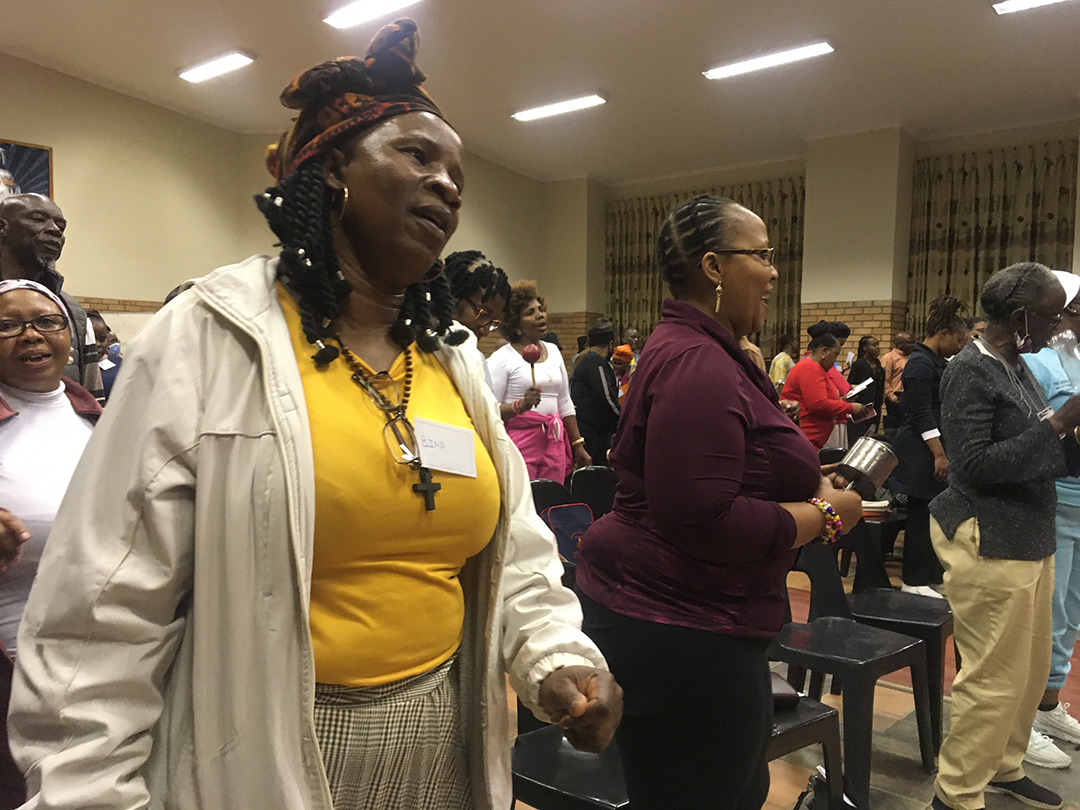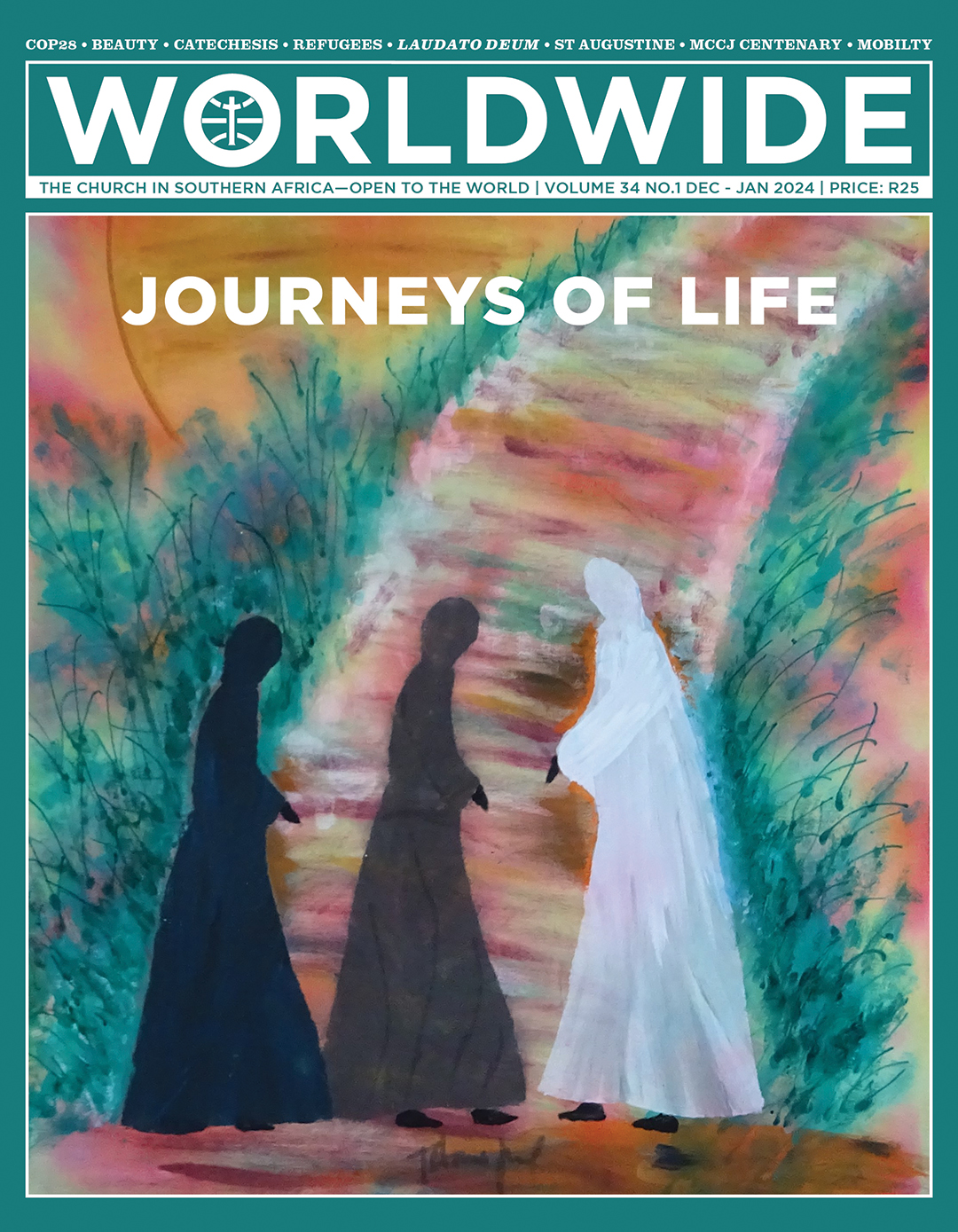
JOURNEYS OF LIFE
The painting on the front cover entitled “The disciples of Emmaus” reflects our journey of hope. Jesus not only walks with us, but gives us the wisdom to perform our ministries and opens our eyes to see Him in the people that we are serving.
SPECIAL REPORT • BEAUTY
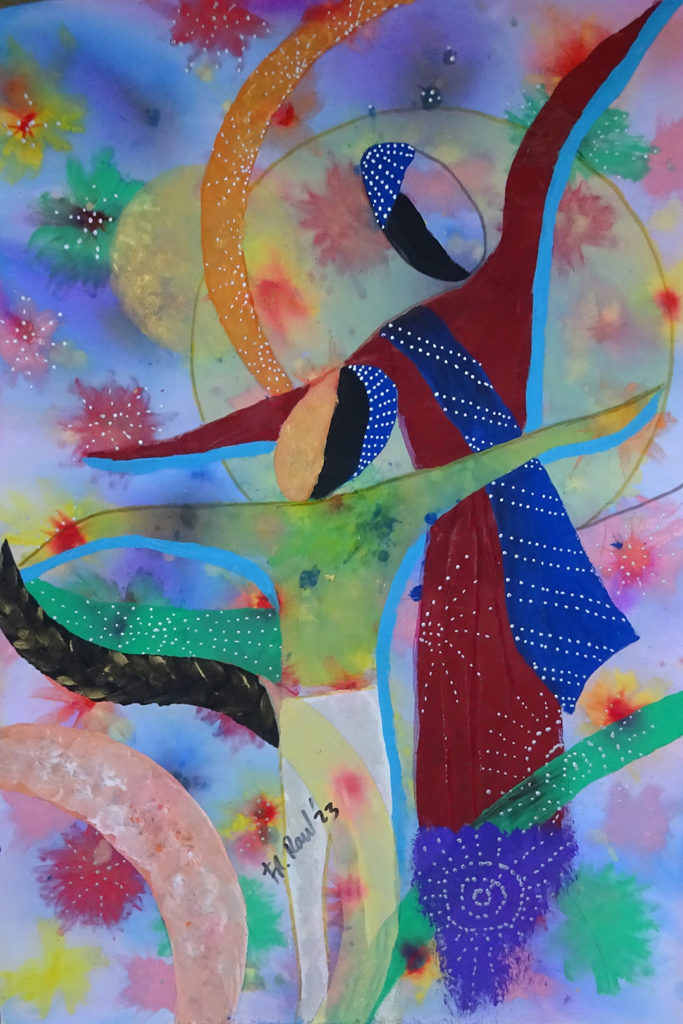
JOURNEY TO BEAUTY THROUGH ARTS AND CREATIVITY
The world needs Beauty as the lungs need air. A journey towards Beauty is also a journey to God. A Comboni missionary from the Philippines is exploring this journey, making use of his artistic painting talents.
BY Fr Raul Tabaranza MCCJ | Pretoria
THE TRANSCENDENTALS are the properties or eternal attributes of Being. They were named in Latin: Unum (One), Bonum (Good), and Verum (True). Each being possesses these attributes. Additional characteristics like Thing and Beauty were added to the list of transcendentals. Philosopher Plato in his philosophical conversation considers three transcendentals: Truth, Goodness and Beauty. The source of all transcendentals is God, who possesses them in ultimate perfection. God is Truth, God is Good and God is Beauty.
The need of Beauty
I would like to dwell on one of the transcendentals, called Beauty. The Church invites us to pursue Beauty, to seek God’s magnificence and grandeur through art, like music, poetry, paintings, sculptures and other forms of creativity. These are modes of expressing our faith and approaching God. Beauty, in the context of art, is the measurement of eloquent connection between the artist and the perceiver. Artistic work has a powerful and mysterious quality which provides one with happiness. Art and beauty can deepen the church’s impact, increasing and enhancing hope. One cannot detach hope from beauty, for if God is beauty, divine goodness prevails. Beauty is interpreted mostly in all forms of arts.
Art gives us that capacity, room, space and season, which is very much like moments of prayer and invocation. We all need that space, the world needs that atmosphere, where we can be in union with Somebody and enjoy the company of the greatest artist of all, the Lord.
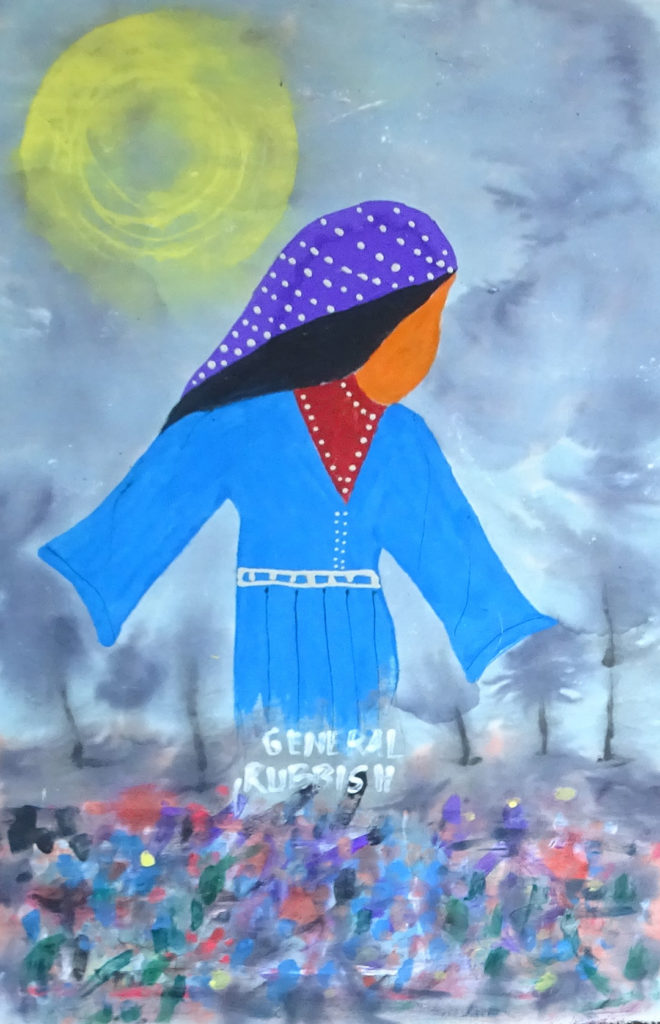
In the poem “L’envoi” by John Charles Mcneill, the poet expresses the God of Beauty in a rhetorical way: “God willed, who never needed speech: ‘Let all things be’. And, lo, the starry firmament, and land and sea and his first thought of life that lives in you and me. His circle of eternity, we see in part; our spirits are his breath, our hearts beat from his heart; hence we have played as little gods; and called it art.”
Art is a neglected topic in this materialistic world. We have to keep on asking ourselves what is truly beautiful and how it can lead us to God. We must be creative and invest, as a Church, in something that is beautiful. If we reflect genuinely on the things around us, we will discover that we have a limitless supply of art materials. We just have to rediscover, for what we need is already available; and when we are able to create something new and unique, what a big lift of our soul! Practical artists utilize what is available and produce purely for the sake of beauty; and sometimes, provoking issues too, with some abstract figures, leading to a deeper understanding of God.
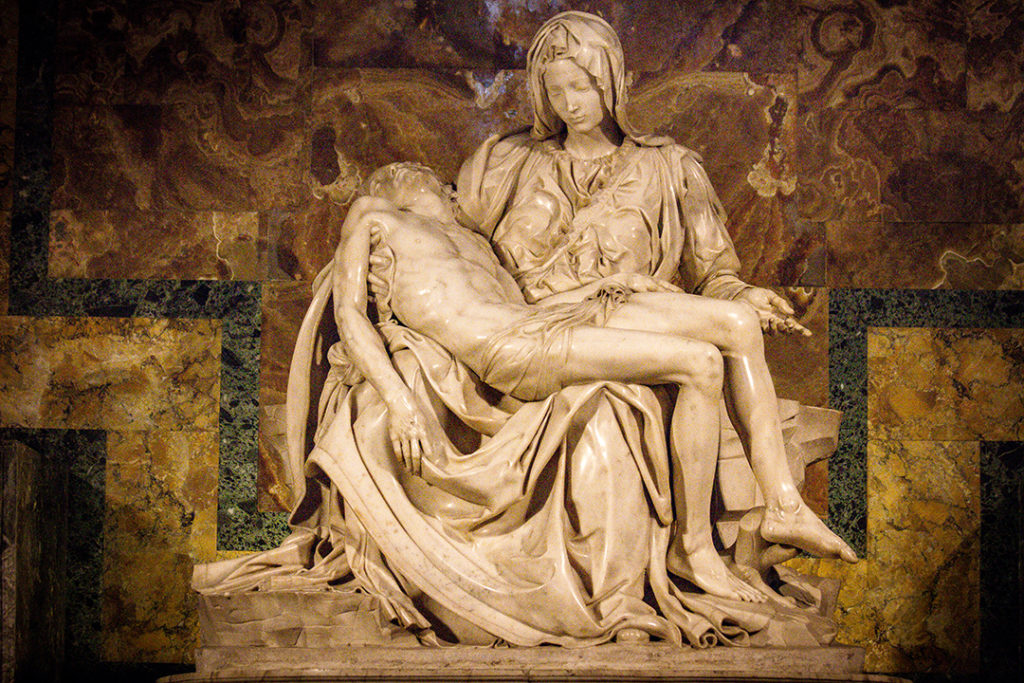
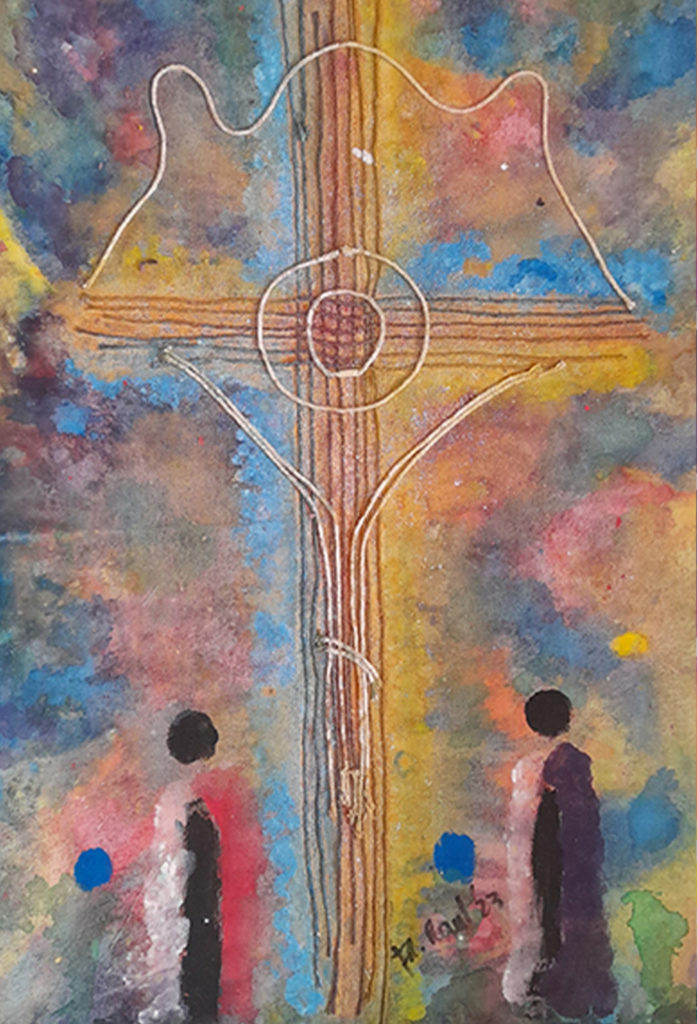
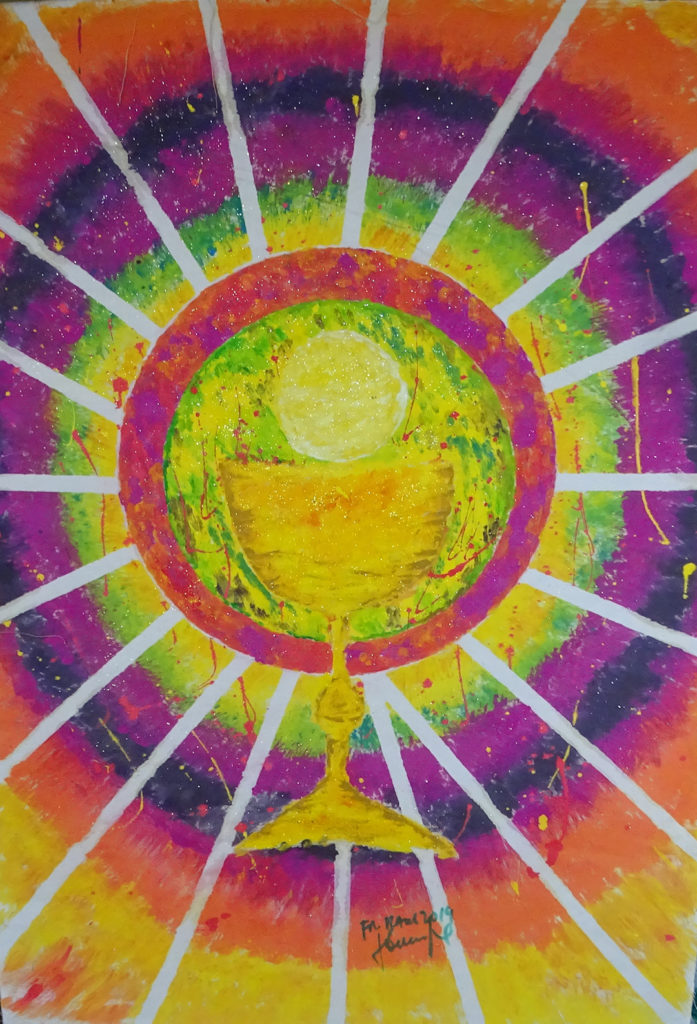
Learning to ‘read’
A piece of art speaks a lot; if one is able to read the message of a painting, the emotion of the artist is always right there. Though a piece of art may not be easy to comprehend or pleasing to all, we should learn to read an artwork and find its beauty, no matter how abstract it is. Some may appreciate an abstract painting even when they do not find meaning in it, or are incapable of interpreting it. The color combination, the strokes and delicate details, the harmony of the different elements make the piece beautiful. It may not be relevant to some, yet very meaningful to others.
I have visited the chapel of St Little Brother Charles de Foucauld, in Rome. I fondly called him my Seraphic Little Brother. The artist, through his painting, uses a most unique way of expressing his prayer and reaching out to God. He captures the Beauty of God and of the Blessed Mother Mary, in simple ways as fruits of his contemplation. As a hermit, he was constantly praying, writing journals and poems, and painting his thoughts. Art can be a form of prayer and meditation. My own works of art are also very varied in form and style: from abstract paintings, paper collages, clothes collages, doodles, newspaper canvasses and more. My strokes vary according to my time and mood. An artist is like a chameleon: changing styles and colors, blending paints, enjoying a wild imagination and varied ideas of artwork based on reflection prayer. St. Charles de Foucauld expressed beauty in many different ways too.
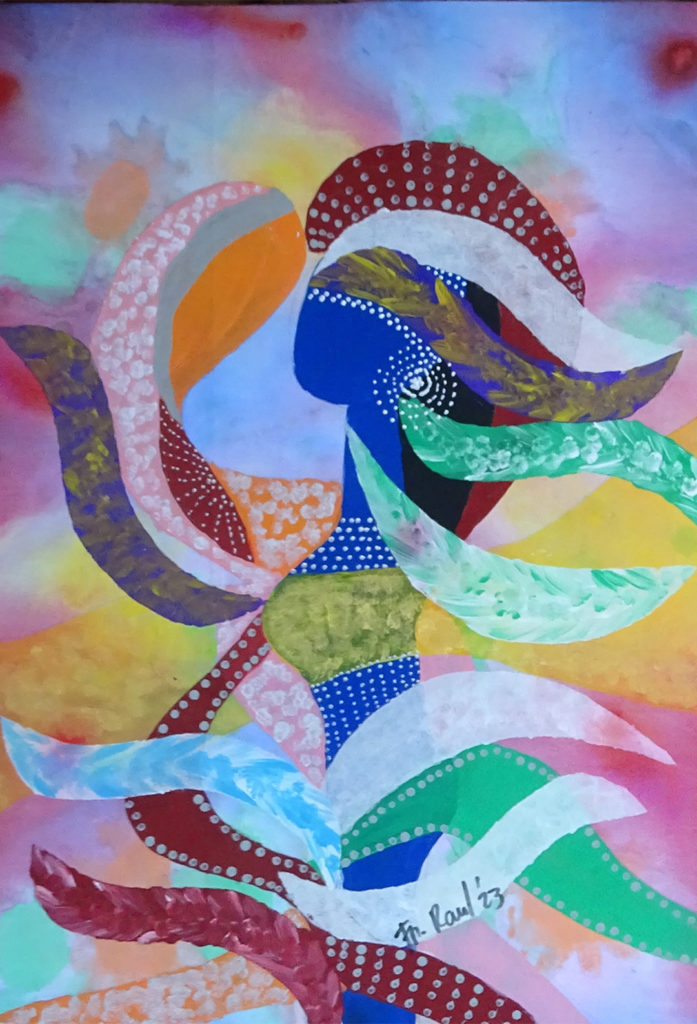
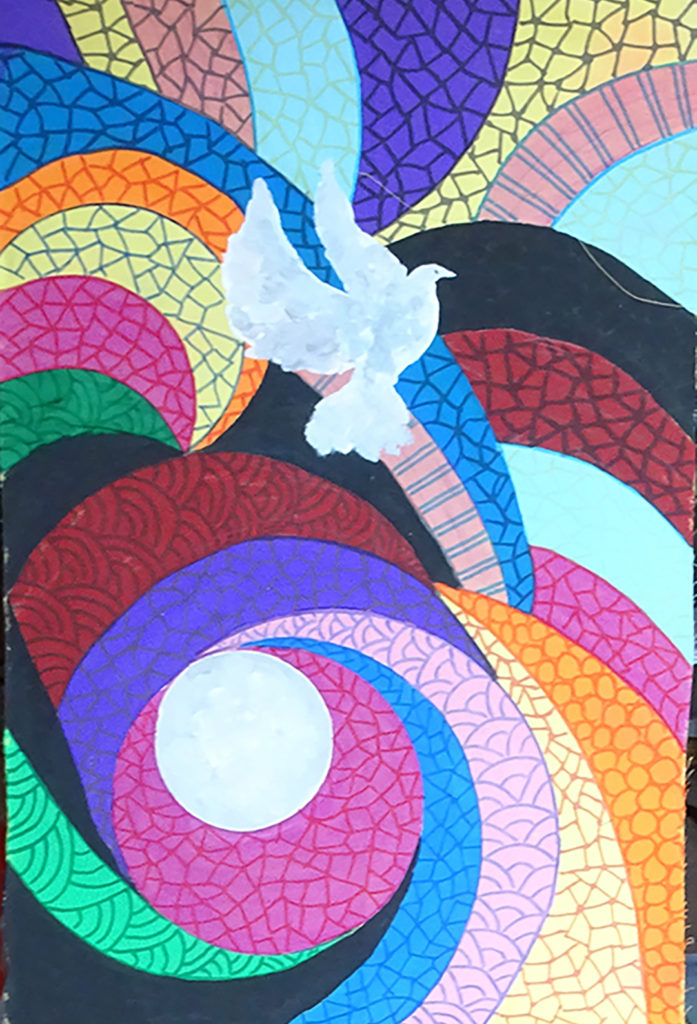
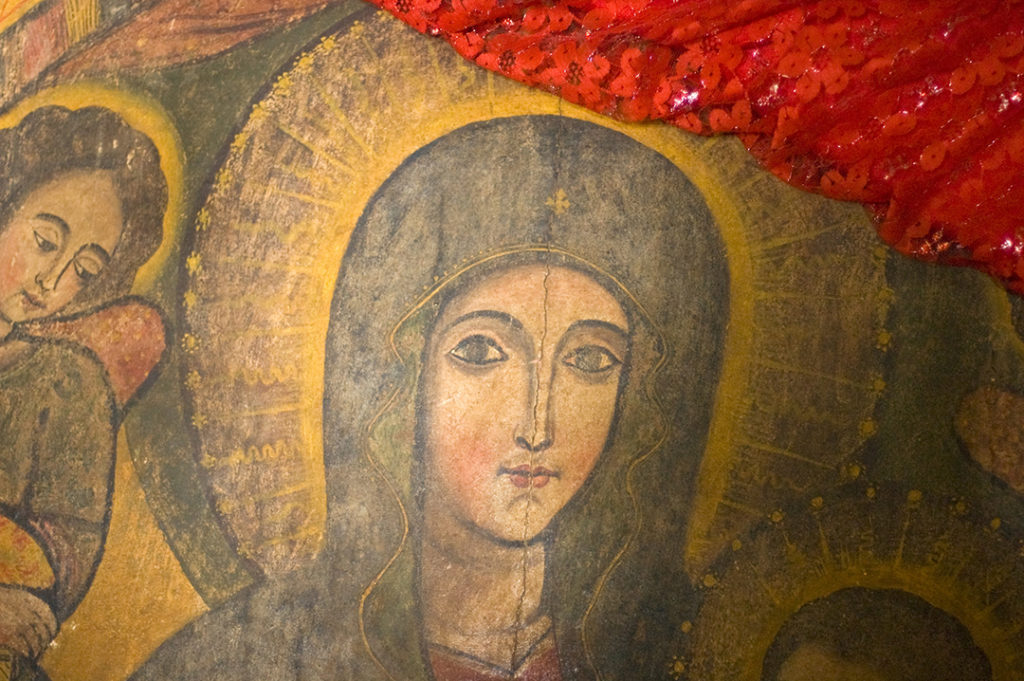
Spirituality in Arts
There are always spiritual motivations in art. If one visits museums and galleries, one sees the beauty of art in for example sacred walks or sacred dances. There we find the artist’s hidden “spiritual posture” painted with striking colors. The fascinating book “Two Dancers in the Desert” portrays Charles de Foucauld and his Unseen Partner (God), as experiencing a spiritual dance during his eremitic journey. With great trust in God, one need not to be afraid during one’s life journey, for one will always have a safe landing. Even though I was given that book more than ten years ago, the images are is still very present in my heart. I painted my own version of the same title, created my own reflection paper, and made a PowerPoint of it.
The journey towards Beauty through art requires a great deal of imagination and the use of one’s senses. It is always transformative, as one develops patience, appreciation of silence or solitude, valuing of time and resources, communing with nature and getting closer to God, as one executes one’s talents. As a self-taught artist I am still on a journey, exploring my talents. There is still so much to learn and to develop. I feel increasingly closer to myself, knowing myself better and probably becoming closer to God in many hidden ways. Expressing beauty in art is actually life-enhancing; it helps us to rediscover resources that are present within us. It is about creating our own space, expressing our faith, cultivating our imagination with vision, transcending our current moment in life into the future, which is spiritual and hopeful.
The journey towards Beauty through art requires a great deal of imagination and the use of one’s senses.
Many people visit museums and galleries seeking religious motivation, regardless of their religious denominations. They experience awe, great reverence, stimulated emotions recognizing the presence of God. Visiting sacred places makes one wonder, because many paintings will lead one to reflect on and experience God’s presence. These places display ancient’s works of art and religious and cultural artefacts which are instrumental in strengthening our faith.

Prayer and Arts
Another inspiring icon in capturing beauty through art is St. Therese of the Child Jesus. She was given the duty of painting and was relieved from her work in the sacristy. She expressed her prayers more in art through painting and poetry, including community and social activities through plays and drama, like the production of Joan of Arc. Her artistic talents were the fruit of her prayer and deep contemplation. “Looking at a work of art that illustrates the spiritual testament of St. Therese of Lisieux, we could say that the eye listens and the soul is elevated” (Devoud). My latest doodles engage more gospel stories, traditional celebrations and the mysteries of the Holy Rosary. I also have many doodles with varied expressions. My paintings are more abstract, having deeper symbols and meaning. The journey of an artist is not only about capturing beauty, but also about delivering messages of faith, hope and love. I guess that this is the real essence, when your message is conveyed in an artistic way. It is a spiritual process for an artist, hoping to bring about spiritual experiences for others. Art is an approach, a method of evangelization, presenting the saving gospel of Jesus Christ.
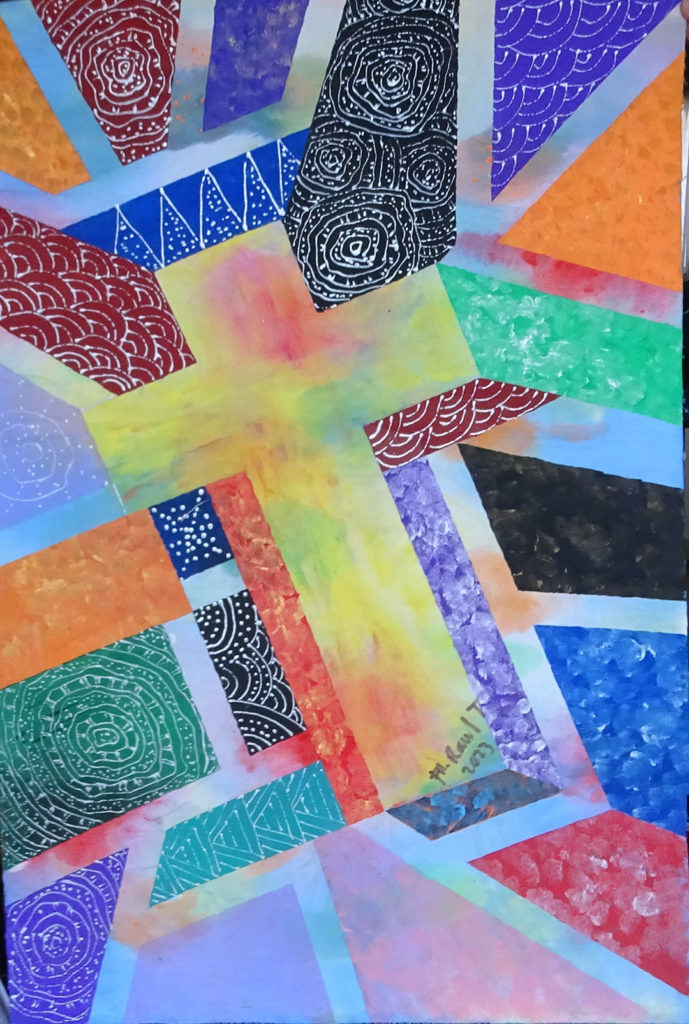
Custodians of Beauty
Pope Benedict XVI called on artists to collaborate in preaching the matters of the spirit, of God Himself, reiterating that it is the task and mission of the artist to grasp the treasures of the heavenly realm, in words and colors and forms, making them accessible to all people. The Pope added: “And if we were deprived of your assistance, our ministry would become faltering and uncertain, and a special effort would be needed, one might say, to make it artistic, even prophetic.” The Pope then made a commitment to “re-establish the friendship between the Church and artists”, and he invited artists to make a similar, shared commitment, analyzing seriously and objectively the factors that disturbed this relationship, and assuming individual responsibility, courageously and passionately, for a newer and deeper journey in mutual acquaintance and dialogue in order to arrive at an authentic “renaissance” of art in the context of a new humanism (Letter to Artists 2009).
Artists are not merely painting, singing, dancing, writing and performing, but they are heralds and witnesses of hope for humanity.
I look at myself, asking if painting is affecting my journey as a missionary priest: in the real sense, not at all! In fact, it helps me strike a balance. I juggle with multiple roles and many other commitments. I paint my prayers and capture their beauty. It has been a challenge, but priesthood and my commitments are sources of inspiration too. It is all about flexibility of time and remaining an active participant in our missionary and community life. I had other dreams when I was young, I wanted to be a doctor and a teacher, but God chose me to become a Comboni missionary priest. Therefore, I see it as a great privilege because I have discovered more gifts and talents in myself, being a missionary priest. I feel that I must nurture all the gifts entrusted to me by God, and make them fruitful for the kingdom. I feel that in my own small way, I have answered the call of the Pope.
Lastly, Pope Benedict XVI appealed to all artists: “You are the custodians of beauty: thanks to your talent, you have the opportunity to speak to the heart of humanity, to touch individual and collective sensibilities, to call forth dreams and hopes, to broaden the horizons of knowledge and of human engagement. Be grateful, then, for the gifts you have received, and be fully conscious of your great responsibility to communicate beauty, to communicate in and through beauty!” Artists are not merely painting, singing, dancing, writing and performing, but they are heralds and witnesses of hope for humanity. For me painting started as a hobby, yet now, I feel it my responsibility to let my fellow human beings see and experience the real beauty around us: the beauty that God has created for us.
References:
- Pope Benedict XVI. 21 November 2009. Meeting with Artists. The Vatican.
- Devoud, Marzena. 28.03.2023. Beautiful book combines St. Thérèse’s wisdom with art of her time. aleteia.org. Accessed on: 25.10.2023.
- Lepetit Charles . 1983. Two Dancers in the Desert: The Life of Charles de Foucauld. Orbis Books, Maryknoll, NY, USA.
- Mcneill, John Charles. L’envoi. internetpoem.com. Accessed on: 25.10.2023.

